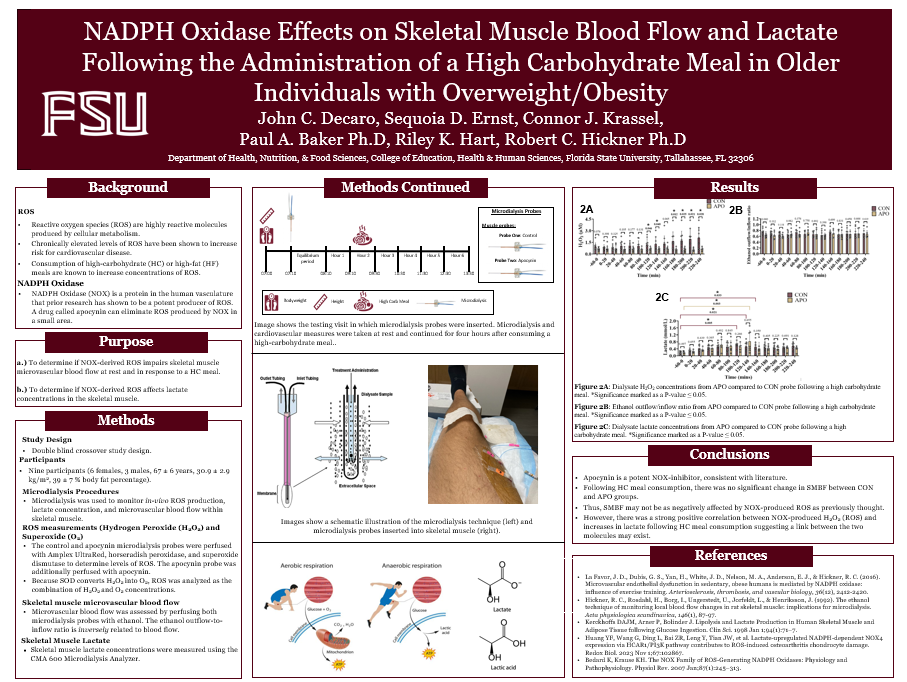President's Showcase
Sequoia Ernst He/Him
Supervising Professor: Dr. Robert Hickner
Sequoia Ernst is a junior majoring in Exercise Physiology. He got started in research through the UROP program. He did UROP in Dr. Hickner’s laboratory under one of Dr. Hickner's PhD students and conducted this IDEA Grant work in the very same laboratory! Once he finishes at FSU he plans to pursue graduate school to continue doing research, with the hope of completing a PhD someday. His research interests are redox biology, blood-flow restriction exercise training, cardiovascular physiology, and plant-based nutrition research.
Abstract
Impaired blood flow and elevated reactive oxygen species (ROS) concentrations, generated primarily from NADPH oxidase (NOX), indicate elevated risk for cardiovascular disease, the number one cause of death in the U.S. Emerging work suggests a link between lactate and NOX-produced ROS concentrations. However, it is unknown to what degree NOX-produced ROS concentrations impair skeletal muscle blood flow (SMBF) and affect lactate concentrations.
Purpose: To determine if NOX-derived ROS impairs SMBF and affects lactate concentrations in older adults with overweight/obesity.
Methods: Nine older individuals (50-75 yrs old) with overweight/stage 1 obesity (BMI: 25.0-34.9 kg/m2) had two microdialysis probes – control and apocynin (a NOX inhibitor) – placed in skeletal muscle to measure in vivo ROS (Hydrogen Peroxide (H2O2)) concentrations, SMBF (measured by ethanol outflow/inflow ratio), and dialysate lactate concentrations under both fasted basal conditions and up to four hours postprandially.
Results: SMBF was not significantly different between the APO perfused and CON probe under fasted basal conditions, nor during the post-prandial time period. However, NOX-produced H2O2 was positively associated with lactate at two hours, three hours, and four hours postprandially.
Conclusions: While NOX-produced H2O2 concentrations displayed a trend towards decreased SMBF under fasted basal conditions, it did not ultimately significantly affect SMBF. Following the meal consumption, there was a strong association between NOX-produced H2O2 concentrations and dialysate lactate. Together, these findings suggest that NOX may not be as detrimental for SMBF as previously thought, although a link between NOX and lactate may exist in the vascular system of the skeletal muscle.


